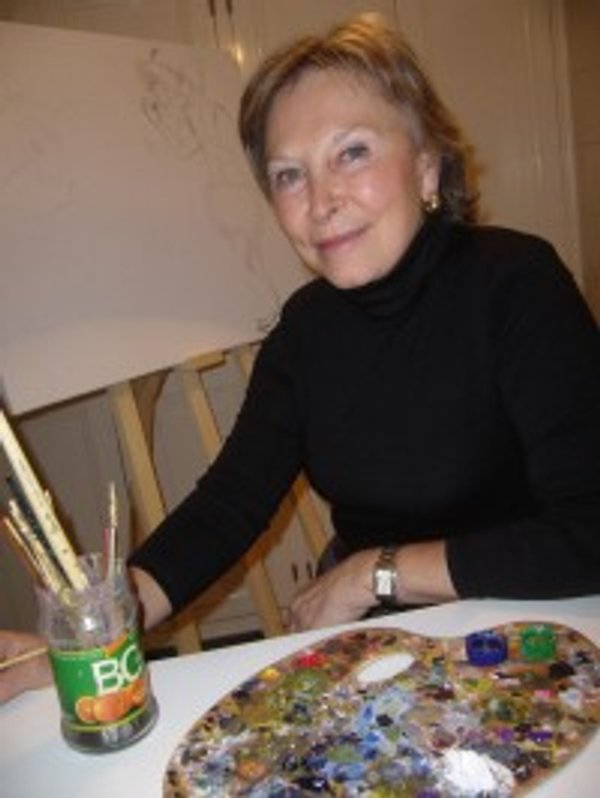“I am a bit daring, especially when it comes to portraits. When I was asked to paint one of Saint Josemaría Escrivá, I said: why not? It was an honour for me to paint the portrait of such an important person”.
María Faraone is a painter whose subject matter is the human person and beauty. She holds the opinion that “art should be something that lifts us up as human beings”. She admits that not everyone thinks the same, but she asserts her position with personality, “I am a rebel. I need to express what I feel. I paint differently from the rest of the world.”
Nowadays abstract art seems to be enjoying greater prestige in certain schools. Nonetheless, Maria still paints with defined figures and runs the risk of being labelled as being out of touch. She seeks harmony and tries to reflect it through colour, joy, and even pain. She affirms that one cannot be understanding towards others without being aware of what sorrow is, and she shuns all that degrades the human person.
***

How did you discover Saint Josemaría Escrivá?
I met Opus Dei through my husband. Later, I read The Way, Furrow… I have watched films of Saint Josemaría Escrivá; I have made spiritual retreats. I like the spirit of the Work – to seek sanctity in the affairs of daily life, each in his own place. For me, it was marvellous. It helped us to be better; I found myself changing. We have more peace, we understand more things, and we find meaning in difficulties. I have learned how to offer up the problems…

What do you think of the ambience in the apostolic works promoted by Opus Dei?
I have seen my mother’s spirit reflected in how the virtues are lived in Opus Dei. I have always admired her deeply, precisely for that spirit of industriousness, of excellence, of doing the best we can, of being in the last place… It was a reaffirmation of the values that I had lived close to my mother. Hence I found it second nature to me; what I heard seemed logical. I saw it as an invitation to live with my eyes on God and my feet on the ground.
How did you get to capture the peace and joy of Saint Josemaría in your paintings?
I think the photographs and the videos helped. Besides those of us who do these things have a special intuition. I like the human figure. I think the personality is manifested in the look and in the gestures. The portrait has to reflect the spirit of the person.
Does painting help you to pray?
I think so. In some way, yes, because I would like to give glory to God through my work. I have found a vehicle to give glory with. I think that this is one of the missions I have. Besides, I feel the commitment to do so because God has given me this gift. The talent is not mine. He lent it to me, and I have to return it.
What is your relationship with Opus Dei?
I have been a Cooperator for more than 20 years. I love the Work as if it were mine and I collaborate in whatever I can. I see that they try to reach out to people through the spirit of Opus Dei and its means of formation, particularly to the young ones.
***
We leave María Faraone in her workshop experimenting with new artistic expressions, adventurously trying to combine her painting with the music of great operas. But, beyond the figures, what she seeks is to capture the essence of things, according to her way of conceiving art as a spiritual joy that inspires people to build a better world; a world that Saint Josemaría loved and taught us “to love passionately”.
